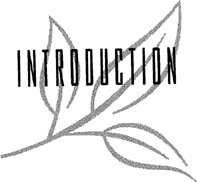

All of us know of women who are beautiful but would hardly be considered pretty. Their eyes may be “too small” or “too far apart” or their nose or lips “too large” or their figures far from ideal. Yet they have something extra, magnetic—something from within—that renders them beautiful. How is it that they possess this quality that can only be called a glow?
According to Chinese tradition, the path, or Tao (pronounced “dow”), of beauty is simply one lane on the road to radiant health. There is nothing particularly unusual about this. Health is beauty; beauty is health. No amount of makeup can camouflage a body that isn’t healthy or, as we Chinese view it, is out of balance.
This often comes as a surprise to new clients who come into my day spa expecting a facial, instruction in skin care, and a makeup application. The nutritional aspects of the beauty program that I offer are deeply rooted in the practices of traditional Chinese medicine. To the Chinese, the term “medicine” relates to a way to healthy life rather than to treatment for illness. These concepts are very different from Western beauty culture.
While cosmetics and skin care can enhance a woman’s outer appearance, real beauty must be solidly based in balance and health. Strong, glossy hair; clear, bright eyes; firm, glowing skin; and strong, pink fingernails—these are the foundations that makeup merely plays up. Nothing can be enhanced that isn’t intrinsically there. This is why the road to beauty, as outlined in this book, is inextricably linked to optimal health.
Our bodies are in a constant state of renewal. Old cells die as new ones are born. By properly nourishing these cells, we can insure that we grow healthier, stronger, and consequently more beautiful day by day.
In my experience as a Ford fashion model as well as in my spa, I have found that many of the most beautiful women are those who have created their own beauty-wellness programs based on this philosophy of balance. No matter how busy we are, to regenerate our bodies and refresh our spirits is a gift we give not only to ourselves but to those we love as well. As the old Chinese proverb states, “An empty well gives no water.” When we take time—even if it’s just a few moments a day—to revitalize ourselves, we have so much more to share with those around us.
The Tao of Beauty offers more than a frantic shape-up plan of diet, exercise, and makeup tricks. It provides a foundation of practices and recipes for balance and wellness that will fortify your body for health and beauty. As so many of us have learned, quick fixes are usually transient, lasting only until the pressure of our everyday lives takes precedence over our best intentions. I will give you in clear, precise language a life path, or Tao, so you can release the power of your beauty and serenity.
My ancestors were Chinese healers and herbalists, and I draw upon this heritage to share the ancient philosophy of Tao. First, I will show you how to determine your basic type according to Chinese principles—yin, yang, or yin/yang (balanced)—and you will then be able to fashion your own beauty-wellness program. I’ll show you how to draw from a full range of simple, easy-to-prepare recipes for delicious foods to eat, teas to drink, and potions to apply to your body to obtain the beautiful results you desire.
Unlike conventional Western beauty, diet, and exercise books that mandate a step-by-step routine to be followed to the letter for specific results, The Tao of Beauty offers a program that you can adapt to meet your body’s needs. You will learn to be in touch with how you feel and what your body needs to correct or maintain the delicate balance of its life energy, or chi.
As a busy working mother, I can fully appreciate that time is always in short supply. With this in mind, I have made sure that the program you design for yourself and the recipes you use are simple to follow. Most of the ingredients for this newfound Tao are either already in your kitchen or in your corner supermarket. For example, you’ll find two powerful food-grade herbs with strong healing properties, xiohuixiang and dingxiang, masquerading under the names fennel and cloves, respectively. Some Asian herbs, like ginseng and royal jelly, are already known in the West. These, and many items that are less familiar, such as dang quai and dried Chinese red dates, can be inexpensively purchased in many well-stocked health food stores. I’ve also listed mail-order sources in the back of this book for your convenience. Furthermore, I’ve made sure that the recipes require minimal cooking skill and little more equipment than a blender, a few enamel and glass pots and pans, and a few glass bowls.

Clove tree (Syzygium aromticum)
I invite you now to join me on this radiant path. Put aside everything you already know about your body; suspend your beliefs about how you should look and what is beautiful. I will introduce you to a new way of thinking that is, in truth, centuries old.